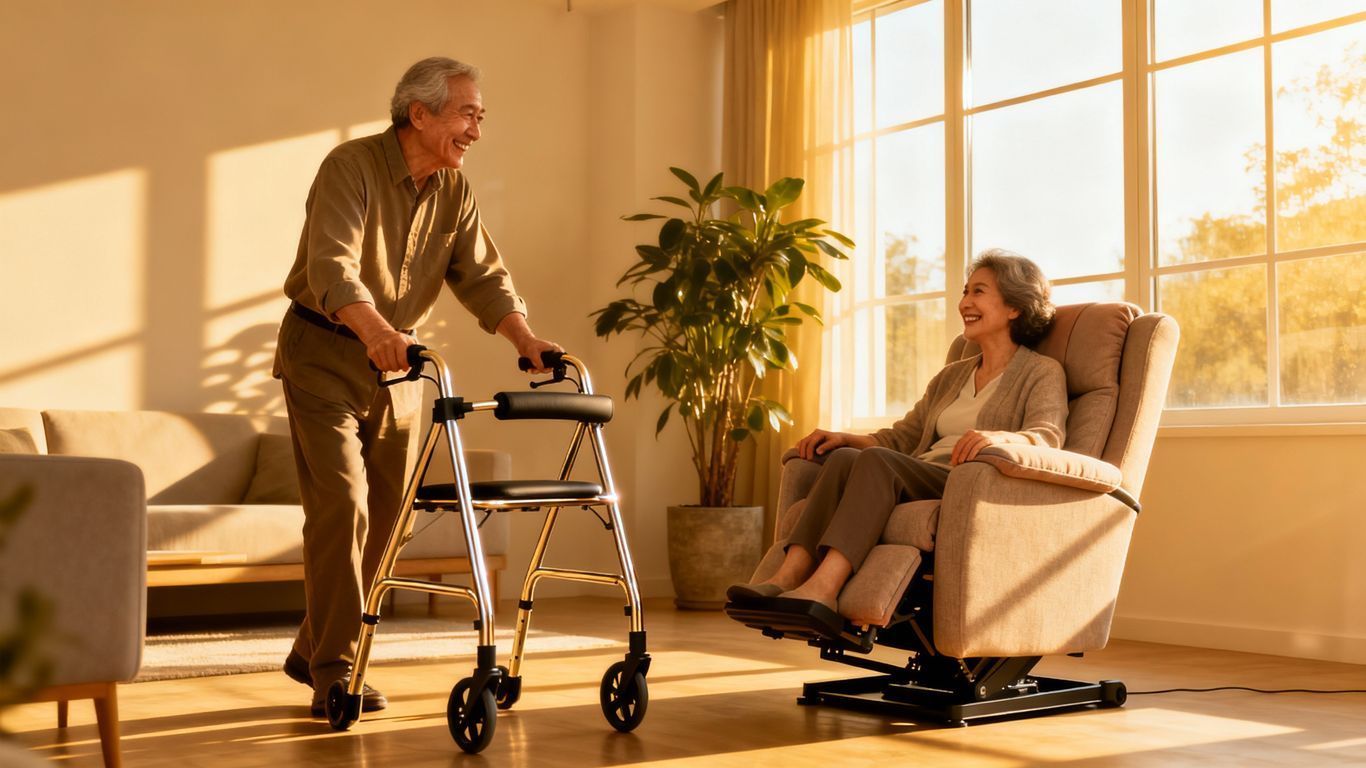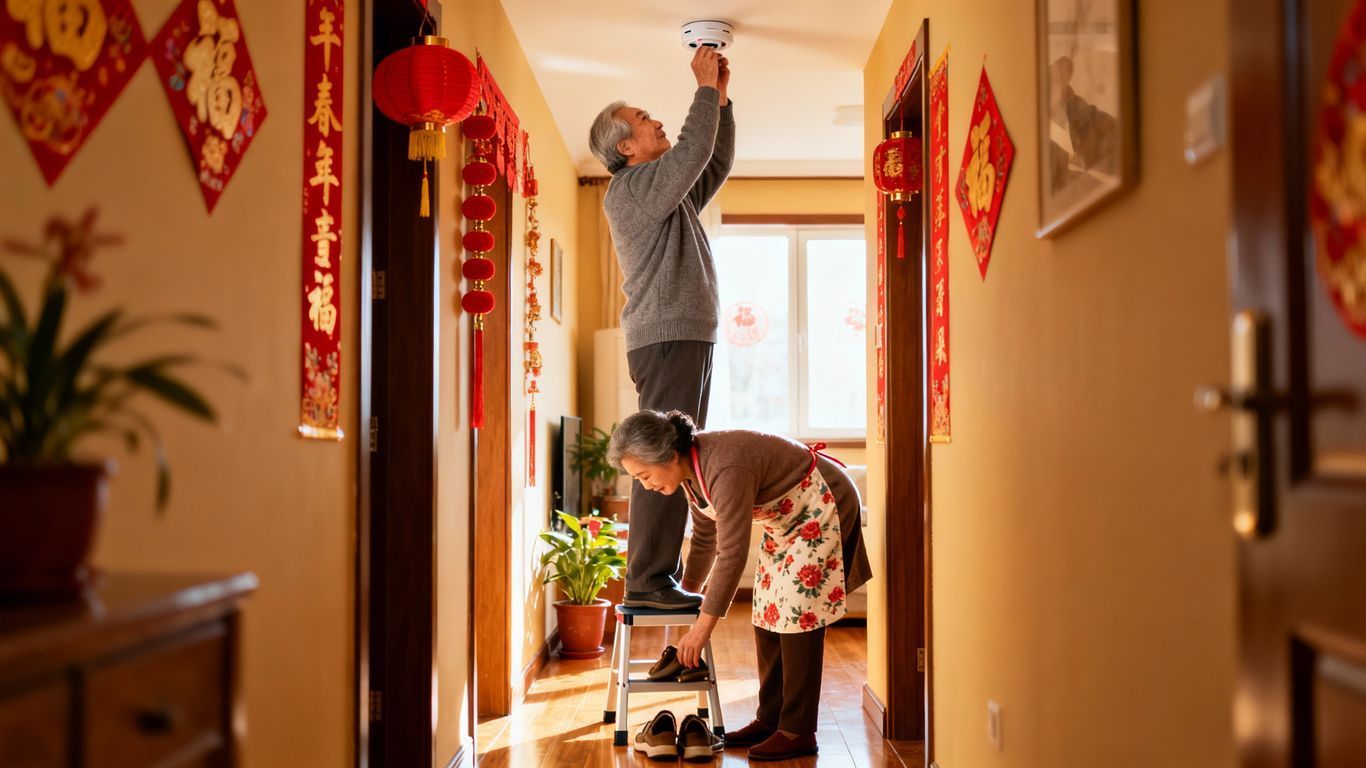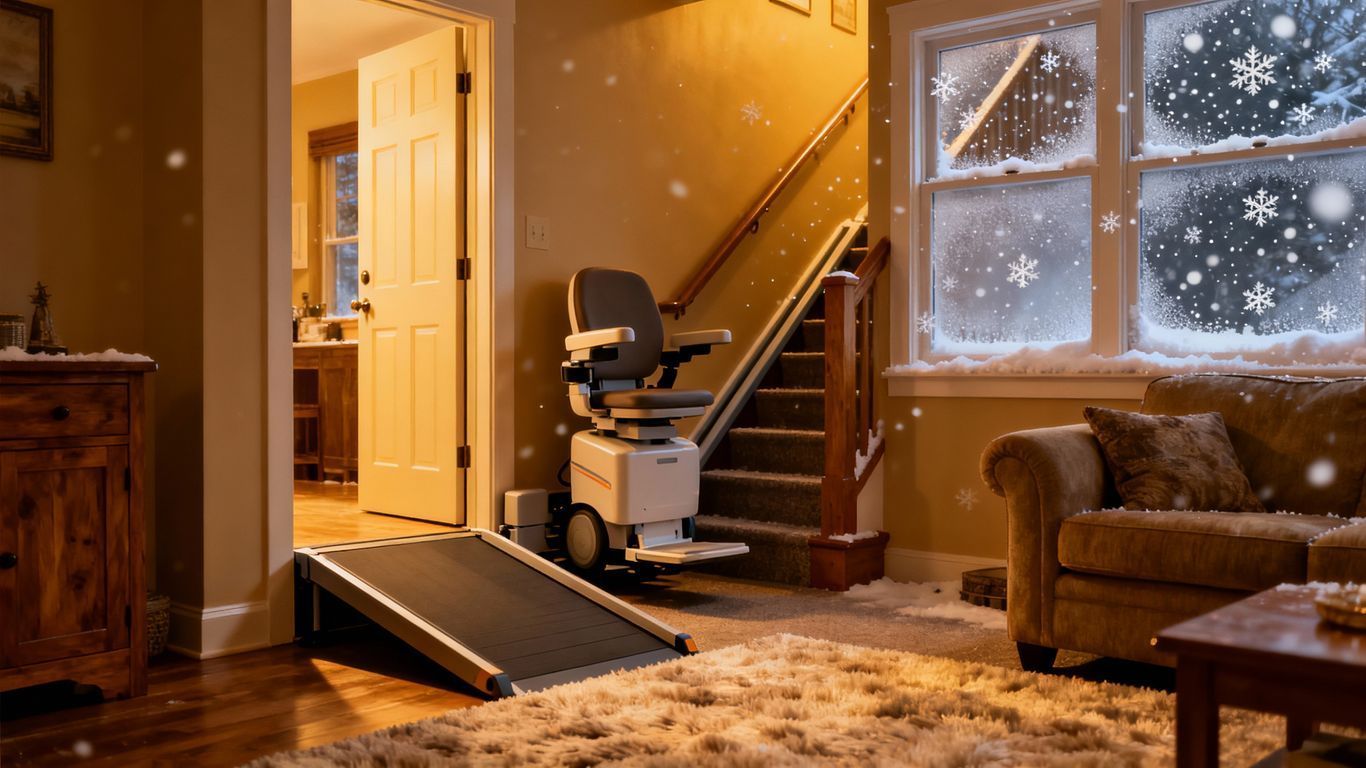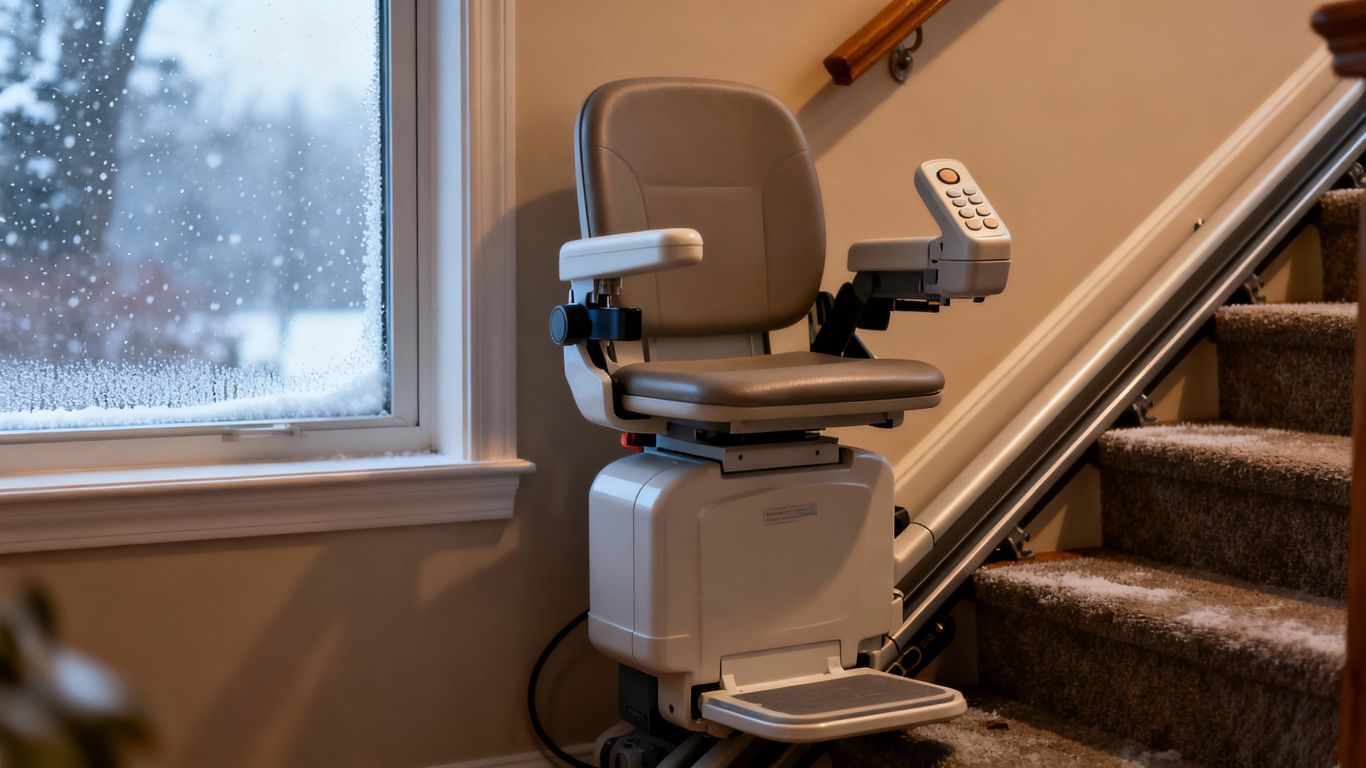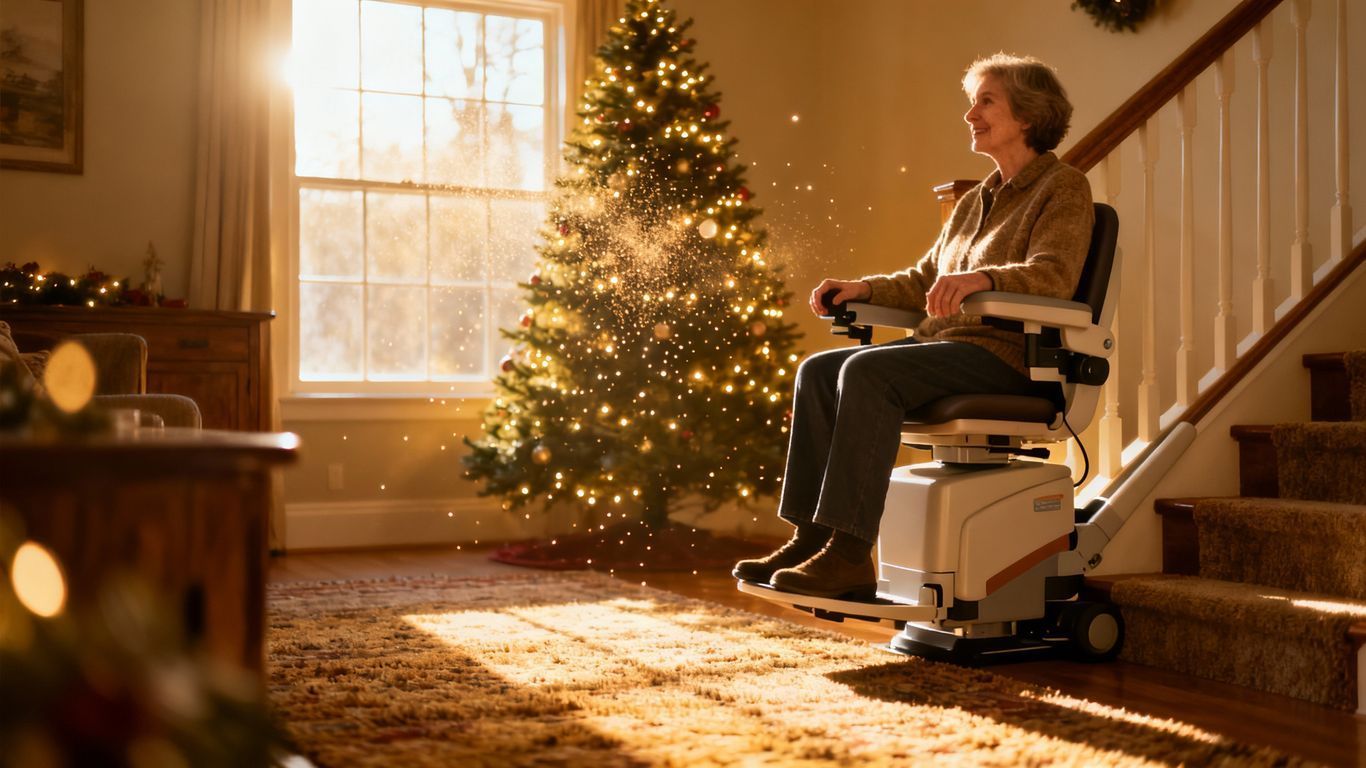Top 10 Holiday Travel Tips for Wheelchair Users in LaFayette, Dalton & Chattanooga
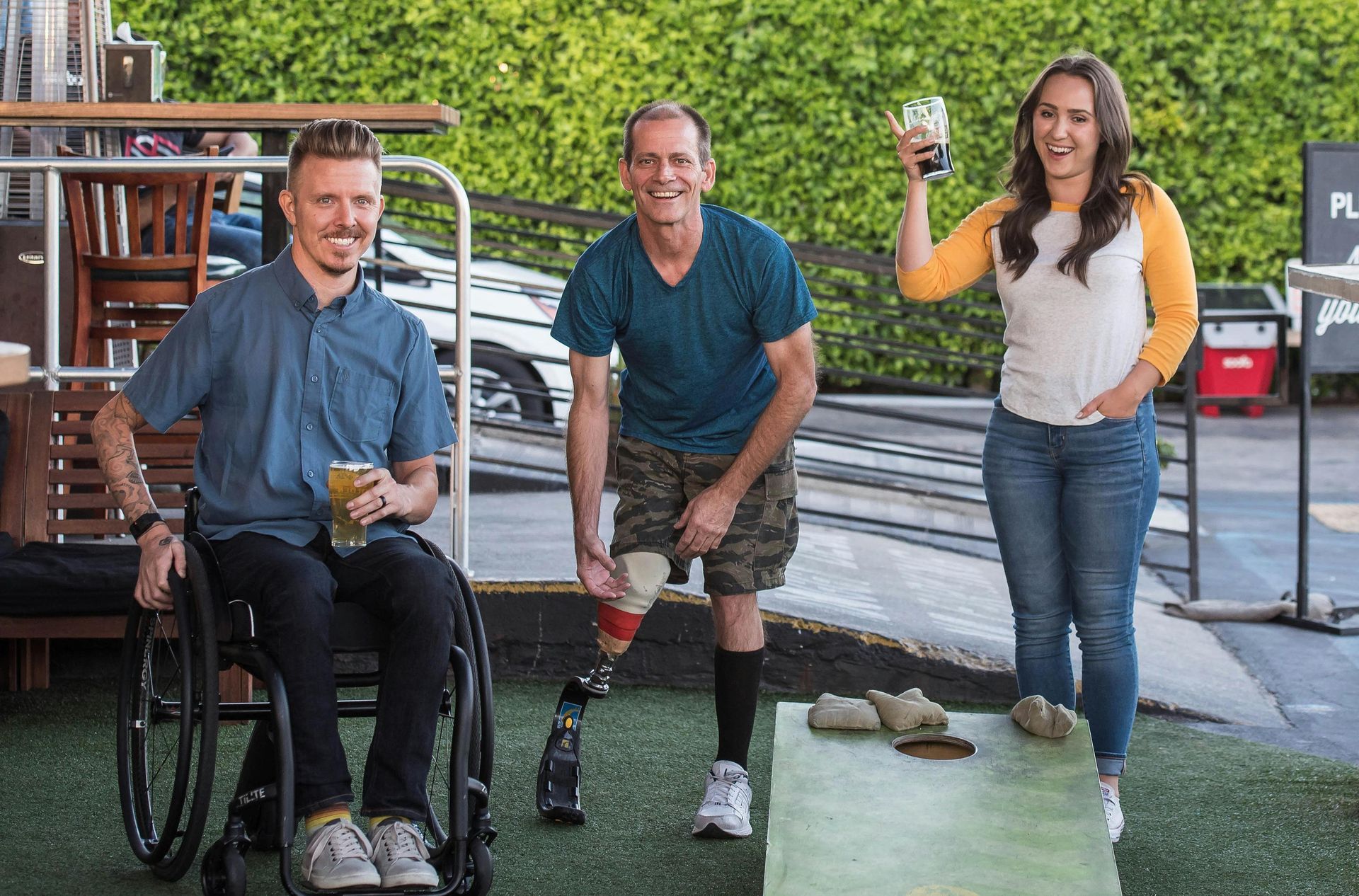
Getting around during the holidays can be a real headache, right? Add a wheelchair to the mix, and it gets even trickier. But don't worry! If you're planning a trip to LaFayette, Dalton, or Chattanooga, we've got some solid accessible travel tips Georgia style to help make your journey smooth. We'll cover everything from your wheels to where you'll sleep, so you can enjoy your holiday without a bunch of stress.
Key Takeaways
- Always check your wheelchair before you leave; a small fix at home is way better than a big problem on the road.
- Book accessible transport and lodging way ahead of time, especially during busy holiday seasons.
- Don't forget travel insurance; it can really help if something unexpected happens with your trip or health.
- Pack extra meds and medical supplies, just in case you get delayed or something goes missing.
- Look up local accessibility info for your destination; knowing what's available can save you a lot of trouble.
1. Wheelchair
Your wheelchair is your lifeline, especially when you're traveling. It's more than just a piece of equipment; it's your freedom. So, making sure it's in tip-top shape before you head out for the holidays is super important. I mean, can you imagine being stuck somewhere with a broken wheelchair? Nightmare fuel!
Here's what I always do before any trip:
- Give it a thorough check-up. I'm talking tires, brakes, batteries – the whole shebang. You don't want to discover a problem when you're miles away from home.
- Pack a basic repair kit. Think spare tubes (if you have them), a pump, some basic tools, and maybe even a spare battery if you're going somewhere remote. It's like having a little insurance policy for your wheels.
- Consider getting power wheelchair maintenance done before you leave. A professional can spot potential issues you might miss.
It's also a good idea to take some pictures of your wheelchair before you leave. That way, if it gets damaged during travel, you have proof for insurance purposes. Trust me, it's better to be safe than sorry.
And don't forget about comfort! Long travel days can be brutal, so make sure your cushions are comfy and supportive. Maybe even invest in a new one if yours is starting to wear out. Your back will thank you!
2. Accessible Transportation
Getting around LaFayette, Dalton, and Chattanooga can be tricky, but with a little planning, it's totally doable. You just need to know your options and plan ahead. It's not always as simple as hopping in a cab, but there are definitely ways to make it work.
Knowing your transportation options is key to a smooth trip.
Here are some things to consider:
- Public transit isn't always the most accessible, but it's worth checking out the local bus and train schedules. See if they have accessible routes or vehicles. Sometimes, smaller towns have limited options, so research is important.
- Ride-sharing services like Uber and Lyft are available, but accessible vehicles can be scarce. You might need to call ahead or request a specific type of vehicle. It's a bit of a gamble, but sometimes it works out.
- Consider renting a wheelchair-accessible van. This gives you the most freedom and flexibility to go where you want, when you want. It's more expensive, but it can be worth it for the convenience.
Don't assume that every place has accessible transportation readily available. Call ahead to confirm availability and make reservations in advance. It's better to be over-prepared than stranded. Also, factor in extra travel time, as accessible routes might take longer.
Don't forget to check out options for Chattanooga memory care if you're traveling with someone who needs it.
3. Accessible Lodging
Finding the right place to stay can make or break your trip. It's not just about having a room; it's about having a comfortable and accessible space that meets your needs. I've learned the hard way that not all hotels claiming to be accessible actually are. So, do your homework!
Booking accessible lodging is a must for a smooth trip.
Here's what I usually do:
- Call ahead: Don't just rely on the website description. Talk to someone at the hotel and ask specific questions about the room's accessibility features. For example, ask about the bathroom layout, grab bars, shower seat, and bed height.
- Read reviews: Check online reviews from other wheelchair users. They often provide valuable insights into the actual accessibility of the hotel. Look for comments about maneuverability, ramp access, and staff helpfulness.
- Confirm dimensions: If possible, get the exact dimensions of doorways, bathrooms, and other key areas. This will help you determine if your wheelchair will fit comfortably.
I always bring a small measuring tape with me. It sounds silly, but it has saved me from some major headaches. I once arrived at a hotel where the "accessible" bathroom door was only 24 inches wide. My wheelchair is 26 inches wide. You can imagine how that went.
Consider these points when booking your stay. You can find motels in Rossville that offer amenities to make your stay more comfortable. Planning ahead ensures a more relaxing and enjoyable vacation.
4. Travel Insurance
Okay, so travel insurance might seem like a boring topic, but trust me, it's super important, especially when you're traveling with a wheelchair. You never know what might happen, and it's better to be safe than sorry. I've learned this the hard way, believe me.
Getting the right travel insurance can save you a lot of headaches and money if things go wrong.
Here's why you should consider it:
- Medical emergencies: If you need medical care while you're away, insurance can cover the costs. This is huge, especially if you're in a different country.
- Lost or damaged equipment: Wheelchairs can get damaged during travel. Insurance can help with repairs or replacements. It's a lifesaver.
- Trip cancellations or interruptions: Sometimes, things happen, and you have to cancel or cut your trip short. Insurance can reimburse you for non-refundable expenses.
Travel insurance isn't just about covering the big stuff. It's also about peace of mind. Knowing you're protected if something goes wrong lets you relax and enjoy your trip more. Plus, some policies offer assistance with things like finding accessible accommodations or transportation.
Before you buy, make sure to:
- Read the fine print: Understand what's covered and what's not. Pay attention to exclusions and limitations.
- Check for pre-existing conditions: Some policies might not cover pre-existing medical conditions, so be sure to disclose everything.
- Compare different policies: Don't just go with the first one you find. Shop around and compare prices and coverage options. Look for policies that specifically cover wheelchair lift failing.
5. Medications
Okay, so this is a big one. Don't forget your meds! Seriously, it can throw a wrench in your whole trip if you do. I've seen it happen, and it's not pretty.
- Make a list of all your medications, including dosages and the times you take them. Keep a copy on your phone and a printed one in your bag. Trust me, you'll thank me later.
- Pack more than you think you'll need. Delays happen, and you don't want to run out. A few extra days' worth is a good idea.
- Keep your meds in their original containers. It makes things easier at airport security, and it's just good practice.
It's also a smart move to check if your medications are legal in the states you're visiting. Some medications that are legal in LaFayette might not be elsewhere. A quick call to your pharmacist can save you a lot of trouble. Also, consider getting a letter from your doctor explaining your need for the medications, especially if they are controlled substances. This can be helpful if you encounter any issues with security or customs. Don't forget to think about how you'll store your medications, especially if they need to be refrigerated. A small, portable cooler can be a lifesaver.
And one more thing: if you have a career opportunity that requires you to take medication at specific times, set alarms on your phone to remind you. It's easy to get off schedule when you're traveling, but staying on top of your medication is super important for your health and well-being. Plan ahead and you'll be fine!
6. Medical Supplies
Packing the right medical supplies is super important. You don't want to be stuck without something you need, especially when you're away from home. Think about what you use regularly and any potential issues that might pop up.
- Extra batteries for your wheelchair – always a must!
- Catheters, if you use them. Bring more than you think you'll need.
- Wound care supplies, like bandages and antiseptic wipes. It's better to be safe than sorry.
- Any special skin care products you rely on. Travel can be tough on your skin.
Don't forget to check expiration dates on everything. It's easy to overlook, but expired medications or wipes aren't going to do you any good. Also, consider packing a small first-aid kit with pain relievers, allergy medicine, and anything else you might need for minor ailments. It can save you a trip to the store.
It's also a good idea to keep a list of all your supplies, just in case something gets lost or stolen. This can help you replace things quickly. And if you're flying, make sure you know the airline's rules about carrying medical supplies. You might need a doctor's note for certain items. You can find mobility products in Georgia to help you prepare for your trip. Planning ahead makes a big difference!
7. Emergency Contacts
It's super important to have all your emergency contacts easily accessible when you're traveling, especially if you're a wheelchair user. You never know when something might happen, and being prepared can make a huge difference. I always make sure to have a physical list, even if I have everything saved on my phone, because technology can fail, right?
- Keep a list of emergency contacts with you at all times. This should include family members, close friends, and your primary care physician.
- Make sure your contacts know your travel plans and any specific medical needs you have. It's good for them to be in the loop.
- Include local emergency numbers for LaFayette, Dalton, and Chattanooga (police, fire, ambulance). Don't assume 911 will automatically connect you to the right local dispatch.
I always keep a copy of my medical information and emergency contacts in a brightly colored folder in my backpack. That way, if something happens and I can't communicate, it's easy for someone to find the information they need to help me.
8. Route Planning
Okay, so you've got your destination in mind. Now, how are you actually going to get there? This is where route planning comes in, and it's super important for wheelchair users. It's not just about finding the quickest way; it's about finding the most accessible way.
Think about this step as your pre-trip accessibility audit. You're checking to make sure your journey is smooth and stress-free. Here's what I usually do:
- Use online mapping tools, but with a grain of salt. Google Maps is great, but it's not always perfect when it comes to accessibility info. Double-check everything!
- Call ahead to attractions and businesses. Ask specific questions about ramps, elevators, accessible restrooms, and the width of doorways. Don't be shy – it's better to know beforehand than to be surprised when you arrive.
- Look for reviews from other wheelchair users. These can be goldmines of information. They'll often point out things that official websites miss.
Consider alternative routes. Sometimes, the 'main' road isn't the best option. A slightly longer route might be smoother, have fewer obstacles, or offer better sidewalks.
Think about things like curb cuts, sidewalk conditions, and the presence of construction. A little planning can save you a lot of hassle!
9. Local Accessibility Information
Okay, so you're planning your trip to LaFayette, Dalton, or Chattanooga. Awesome! But before you even pack your bags, you gotta do some digging on what's actually accessible in each place. Don't just assume everything is wheelchair-friendly. Trust me, it's better to be prepared than stuck somewhere you can't easily get around.
Finding reliable local accessibility info is key to a smooth trip.
Start with the city websites. They often have sections dedicated to accessibility, listing accessible attractions, parks, and transportation options. But don't stop there! Check out local disability organizations and advocacy groups. They usually have the inside scoop on the best places to go and any potential challenges you might face. For example, if you're looking for a place to stay, consider pet-friendliness and other amenities.
It's also a good idea to call ahead to any restaurants, shops, or attractions you plan to visit. Ask specific questions about accessibility, like the width of doorways, the availability of ramps, and the location of accessible restrooms. Don't be afraid to be detailed – it's your trip, and you deserve to know what to expect.
Here are some things to look for:
- Accessible parking spaces: Make sure they're actually wide enough and located close to the entrance.
- Ramps and elevators: Check if they're in good working order and easy to use.
- Accessible restrooms: Confirm they have grab bars and enough space to maneuver.
- Clear pathways: Watch out for uneven surfaces, obstacles, or narrow walkways.
10. Personal Care Items
Don't forget the little things that make a big difference in your comfort and hygiene! It's easy to overlook these when you're focused on the bigger aspects of travel, but packing your preferred personal care items can really improve your overall experience.
- Pack travel-sized versions of your favorite products to save space and comply with airline regulations.
- Consider bringing disposable wipes for quick clean-ups on the go.
- Don't forget items like deodorant, toothbrush, toothpaste, and any skincare products you regularly use.
It's a good idea to create a checklist a few days before your trip. This way, you can add items as you remember them and avoid last-minute stress. Think about what you use daily and what you might need in specific situations, like sunscreen for outdoor activities or pain relievers for unexpected aches.
Wrapping Things Up
So, there you have it! Getting around LaFayette, Dalton, or Chattanooga in a wheelchair during the holidays doesn't have to be a headache. With a little bit of planning and knowing what to expect, you can totally have a great time. Remember, it's all about being prepared and maybe having a backup plan or two. Don't let anything stop you from enjoying all the festive fun these places have to offer. Happy travels, and have a wonderful holiday season!
Frequently Asked Questions
How can I find out if a place is wheelchair-friendly before I go?
You can find information about accessible places by checking out local government websites, tourism boards, or apps designed for people with disabilities. Sometimes, calling places directly is the best way to get the most up-to-date info.
What kind of spare parts should I bring for my wheelchair?
It's always a good idea to bring extra parts for your wheelchair, like spare tubes or tires, and the tools you need to fix small problems. If you're not sure, ask your wheelchair supplier what they recommend.
What should I look for when booking an accessible hotel room?
When booking, make sure to ask about things like roll-in showers, grab bars, and enough space to move around your wheelchair. Don't just assume a room is accessible; confirm the specific features you need.
Is travel insurance really necessary for a wheelchair user?
Yes, travel insurance can be really helpful. Look for policies that cover medical emergencies, lost or damaged equipment, and trip cancellations. Make sure it specifically mentions coverage for pre-existing conditions if that applies to you.
How much medication should I pack for my trip?
Always pack at least a week's extra supply of your medications, just in case of delays. Keep them in your carry-on bag with your doctor's prescriptions. This way, you won't be without them if your checked luggage gets lost.
What's the best way to get around these cities if I use a wheelchair?
For transportation, consider services that specialize in accessible vans or taxis. Many cities have ride-share options with accessible vehicles too. For attractions, check their websites or call ahead to confirm they have ramps, elevators, or other features you might need.

